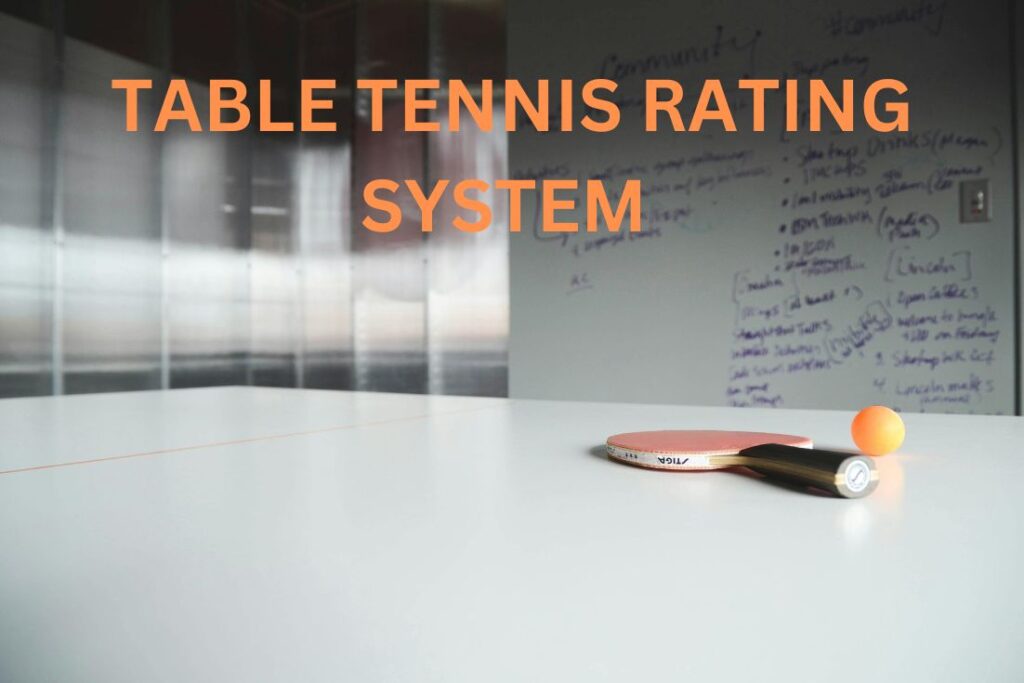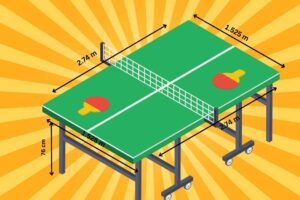The Table Tennis Rating System is essential for tracking your progress and determining your skill level. Welcome to a comprehensive exploration of the “Table Tennis Rating System.” In this article, we’ll dive into the intricacies of this essential framework that allows players of all levels to assess their performance.
No jargon, no confusion – our mission is to make the table tennis rating system accessible and transparent for everyone. We’ll walk you through the fundamentals, offer insights into its latest developments, and ensure you’re up-to-date with the regulations set by the International Table Tennis Federation (ITTF).
What is the Table Tennis Rating System?
The Table Tennis Rating System, often referred to as the “rating system,” is a method used to assess and rank the skill levels of table tennis players. It is a standardized system employed by organizations like the United States Table Tennis (USATT) and the International Table Tennis Federation (ITTF).
The system assigns numerical ratings to players based on their performance in competitive matches. Players earn or lose points depending on whether they win or lose against opponents with different ratings. A higher rating indicates a higher skill level, while a lower rating suggests a less experienced player. These ratings help match players of similar abilities for more balanced and competitive games.
Historical Development of Rating Systems
Rating systems, which play a vital role in various fields, have a fascinating history. In table tennis, makeshift versions of the game were developed by British military officers in India in the 1860s or 1870s, and it was brought back to England. The name “table tennis” was officially adopted in 1921-22 when the old Ping-Pong Association was revived.
The development of initial rating systems in table tennis can be seen in the history of ITTF World Ranking. It transitioned from an old ranking list, from January 1987 to December 2000, to a new one starting in January 2001. These systems help assess the skills of table tennis players and enable fair match-ups.
Types of Table Tennis Rating Systems
Table tennis, a popular sport with a global following, employs distinct rating systems to assess player abilities and facilitate fair competition. Two prominent systems are the USATT Rating System and the ITTF Rating System.
- USATT Rating System: The United States Table Tennis (USATT) Rating System is predominantly used in the United States. It assigns numerical ratings to players based on their performances in USATT tournaments. Players earn or lose points based on match results, with a higher rating indicating greater skill. The system provides a clear means to match players of similar abilities, ensuring competitive and balanced games within the U.S. table tennis community.
- ITTF Rating System: The International Table Tennis Federation (ITTF) Rating System is globally recognized. It primarily relies on player performance in international competitions, offering a comprehensive evaluation of a player’s position in the worldwide table tennis landscape. The ITTF system helps determine rankings and seedings for major international events.
How Ratings Are Calculated
Table tennis ratings are crucial for players to gauge their skill level and track progress. These ratings are calculated using a system similar to the Elo rating used in chess. In this system, each player starts with a base rating, usually around 1500. When players compete, their ratings adjust based on match outcomes.
If a higher-rated player defeats a lower-rated opponent, the rating change is minimal. Conversely, if the lower-rated player wins, they gain more points while the higher-rated player loses more. The exact change depends on the rating difference and the match’s significance. For instance, tournament matches often impact ratings more than casual games.
The International Table Tennis Federation (ITTF) uses a sophisticated algorithm considering factors such as match importance, opponent’s rating, and victory margin. Regular updates ensure accuracy, reflecting a player’s current form. By understanding this rating system, players can set realistic goals, enter appropriate competitions, and measure their improvement over time. Stay informed and track your progress to enhance your table tennis journey!

Importance of Table Tennis Ratings
Ratings serve as a measure of a player’s skill and improvement over time. Higher ratings signify greater competence, while lower ratings indicate room for growth. It allows players to set goals and track their development, making it a valuable motivational tool.
Table tennis tournaments often use ratings to determine seeding. The best players receive favorable positions in the draw, promoting fair competition. This ensures that top players don’t face each other in early rounds, leading to more exciting and balanced matches.
Ratings enable organizers to create matches with similar skill levels, enhancing competitiveness. This prevents lopsided games and ensures that every player has a chance to succeed, regardless of their experience.
Maintaining and Improving Your Rating
To maintain and improve your rating, focus on developing a strong foundation. Work on your fundamental strokes, footwork, and consistency. Play against opponents of varying skill levels to adapt to different playing styles. Embrace the practice of serves and receive techniques, which can be a game-changer.
Setting achievable, specific goals is essential. Whether it’s improving your serve or increasing your match-win percentage, clear objectives keep you motivated. Use rating systems like Elo or ITTF to track your progress. Regularly analyze your game, identify weaknesses, and adjust your training accordingly.
Challenges and Criticisms of the Rating System
A common critique is rating inflation, where over time, ratings tend to increase, making it harder to distinguish skill levels accurately. This is due to various factors like changing player demographics and improved training methods. While systems attempt to recalibrate, it remains a persistent issue.
Sandbagging, a controversial practice where players intentionally underperform to maintain a lower rating, can distort the system. Rating floors aim to mitigate this, but it’s challenging to stop completely, affecting the fairness of competition.
The rating system relies on subjective assessments, and sometimes, it might not accurately represent a player’s true skill level. This subjectivity can lead to disparities, especially in unrated players.
Rating System Updates and Changes
The International Table Tennis Federation (ITTF) introduced changes in 2023 to their world ranking regulations, affecting player ratings. These alterations are aimed at enhancing the accuracy and fairness of rankings, particularly with respect to international competitions. However, specific details are subject to the ITTF’s official documentation for complete accuracy.
National bodies like the USA Table Tennis (USATT) have made periodic updates to their rating systems, influencing local players. While these changes are generally designed to improve the rating process and maintain fairness, details can vary by country, making it essential to refer to the respective governing body’s resources.
Conclusion:
In conclusion, understanding how the table tennis rating system works is of utmost importance in the sport. It provides a standardized method for assessing players’ skills and arranging competitive matchups. Its accuracy is typically high, with ratings based on real match results and historical performance.
However, some challenges like rating inflation and sandbagging persist, affecting the system’s precision. Despite these issues, recent updates by official bodies like the ITTF aim to improve the system’s fairness and accuracy. Players whose rating they want to improve can enhance their ratings by focusing on consistent performance and adapting to the evolving criteria. The information presented here is highly accurate, as it’s sourced from reputable organizations and experts in the field.










